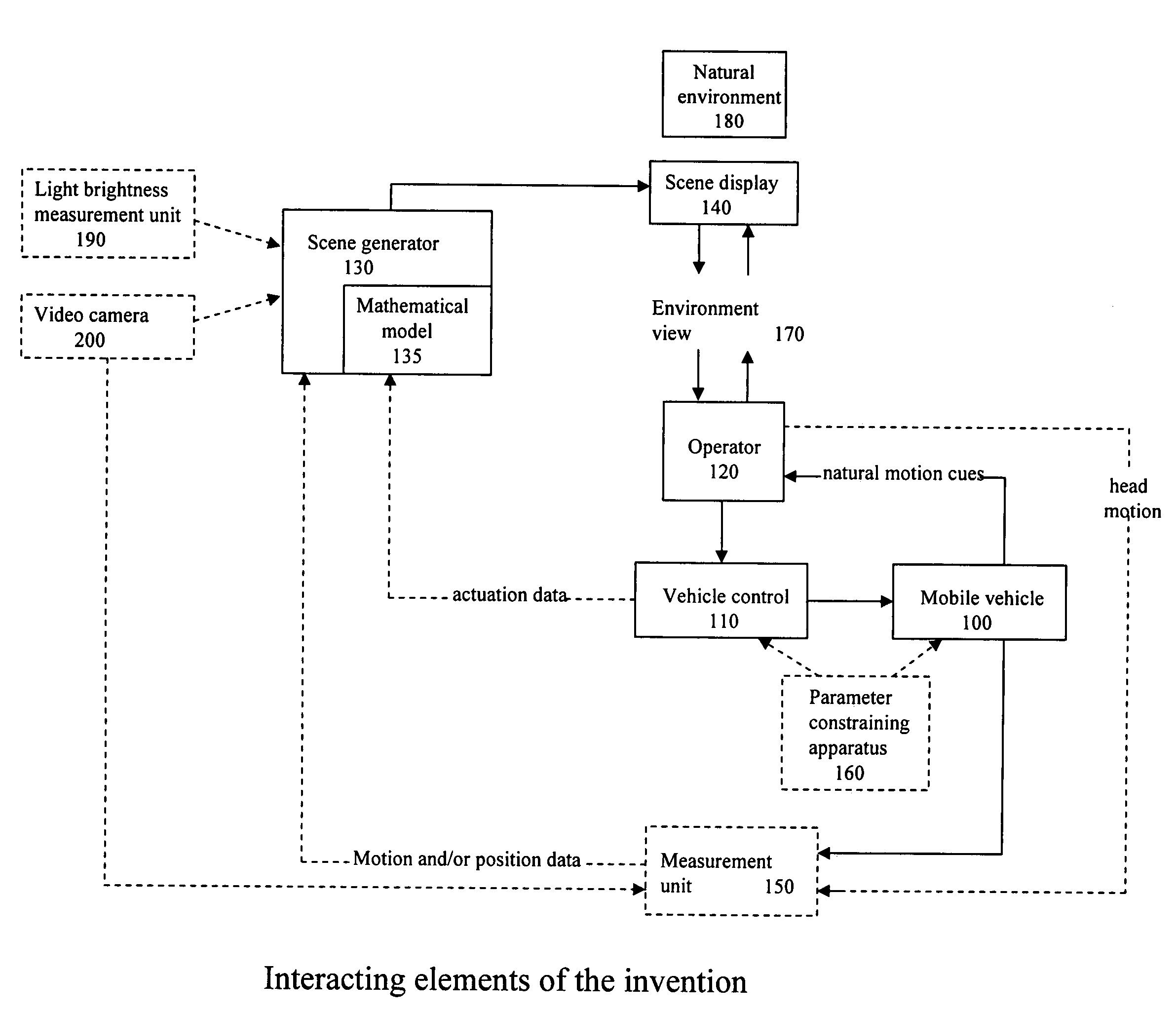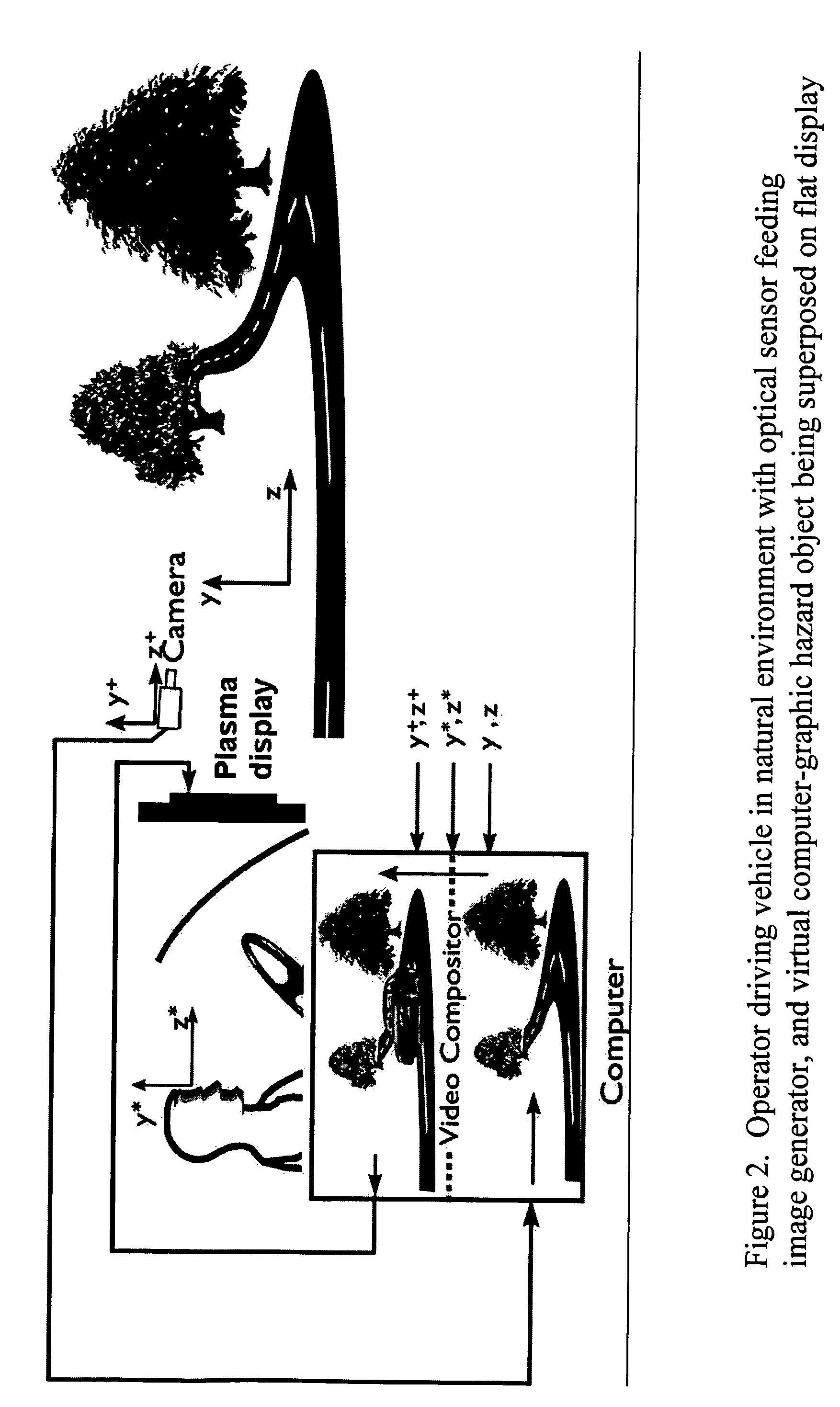Vehicle operations simulator with augmented reality
a technology of augmented reality and vehicle, applied in the field of vehicle simulation, can solve the problems of increasing the attention of drivers, the use of motor vehicle (i.e., driving simulators has not yet advanced beyond manufacturers, suppliers, government agencies, etc., and achieves reasonable cost and overcomes the problem of cost and motion fidelity
- Summary
- Abstract
- Description
- Claims
- Application Information
AI Technical Summary
Benefits of technology
Problems solved by technology
Method used
Image
Examples
Embodiment Construction
[0028]Referring to FIG. 3, the vehicle operation simulator for an illustrative embodiment includes a mobile vehicle 100, which may be any vehicle that moves with at least one degree of freedom, for which movement represents an ordinary feature of operation, and which includes at least one component for regulation or control of said movement. Examples include, but are not limited to, an automobile, aircraft, ship, truck, railroad train, motorcycle, wheelchair, bicycle, snowboard, roller skates, and skis. Mobile vehicle 100 may be operated in a natural environment; for example, in an open space appropriate to the mobile vehicle. This open space should be large and preferably free of other vehicles, potential hazards, and pedestrians. However, it is also contemplated that the invention be practiced on unused or seldom-used tracks, streets, air space, snow slopes, roadway, or other environment on which the particular vehicle 100 might normally be operated.
[0029]A scene generator 130 is ...
PUM
 Login to View More
Login to View More Abstract
Description
Claims
Application Information
 Login to View More
Login to View More - R&D
- Intellectual Property
- Life Sciences
- Materials
- Tech Scout
- Unparalleled Data Quality
- Higher Quality Content
- 60% Fewer Hallucinations
Browse by: Latest US Patents, China's latest patents, Technical Efficacy Thesaurus, Application Domain, Technology Topic, Popular Technical Reports.
© 2025 PatSnap. All rights reserved.Legal|Privacy policy|Modern Slavery Act Transparency Statement|Sitemap|About US| Contact US: help@patsnap.com



